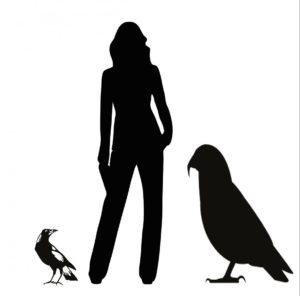Palaeontologists have revealed details of an extinct giant parrot that's twice the size of what was previously the largest known parrot.
The bird has been named Heracles inexpectatus, and stood up to 1 metre - over three foot - tall.
Researchers in Australia and New Zealand say it weighed about 7 kg.
Discovered in Central Otago in New Zealand, the fossil suggests 'Hercules' had a large beak that was able to crack most food sources.
The parrot was found in fossils up to 19 million years old, in an area where it's thought around 40 other bird species lived.
The bird was around twice the size of the now critically endangered flightless New Zealand kakapo parrot.
 The Heracles inexpectatus silhouette next to an average height woman and common magpie Image: Professor Paul Scofield, Canterbury Museum
The Heracles inexpectatus silhouette next to an average height woman and common magpie Image: Professor Paul Scofield, Canterbury MuseumAssociate Professor Trevor Worthy, from the Flinders University Palaeontology Lab in Australia, explained: “It was likely a flightless forager who ate abundantly on fruit and seeds but may have preyed on small animals that it could dig out of logs, or even snack on dead or dying moa [flightless birds].
“We have been excavating these fossil deposits for 20 years, and each year reveals new birds and other animals.
“While Heracles is one of the most spectacular birds we have found, no doubt there are many more unexpected species yet to be discovered in this most interesting deposit.”









